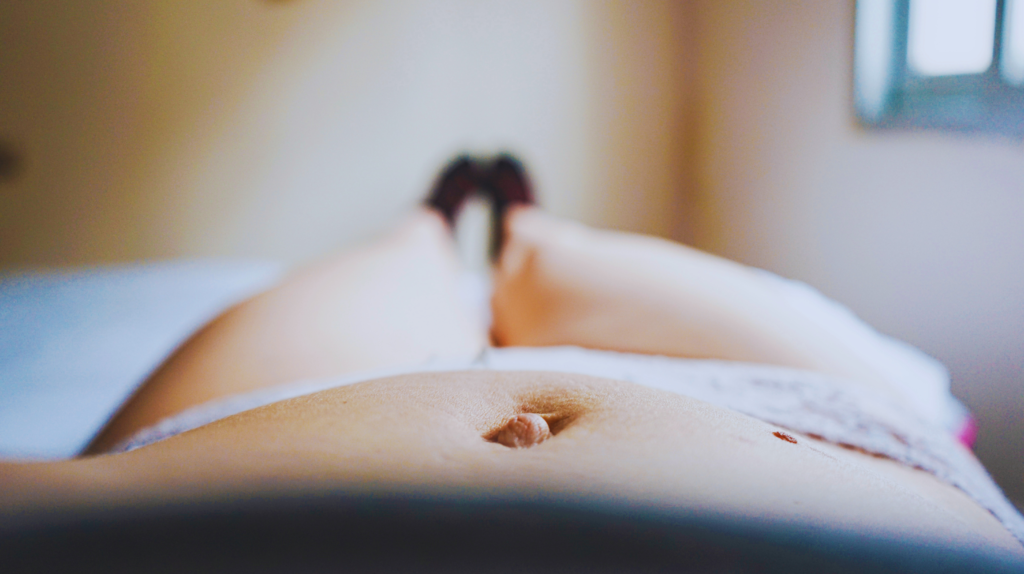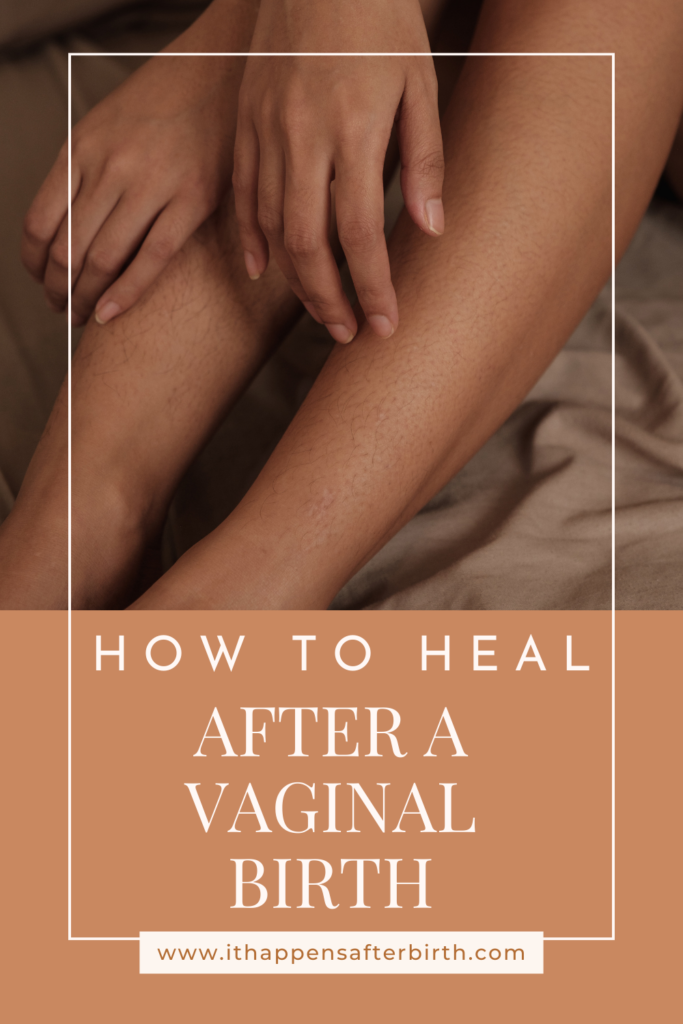
How do you heal after a vaginal birth- and how can you help the healing process?
After a vaginal birth, it will likely be quite a few weeks to a few months before you feel normal again down there. (And if you’re wondering whether you ever will actually feel normal again… the answer is yes. It just takes time!)
Of course, the time it takes to heal depends on how your birth went, whether you needed stitches, and the state of your pelvic health. Occasionally, it may take some extra care to heal well.
The healing process after a vaginal birth
The vagina stretches during birth to allow your newborn to push through. Depending on a variety of factors, you may have torn during the birthing process, or you may have had an episiotomy (the surgical incision made between your vaginal opening and your anus to allow more room for your baby to come through). The stretching may also cause you to be more open or feel more loose down there. The vaginal tissues are elastic and will tighten back to their normal resting state (although not quite the same as before baby). Our bodies are amazingly designed to birth and recover from birth!
Tears usually take 4-6 weeks to heal completely. If you had stitches, they should dissolve by about the 4th week postpartum.
In most cases, the vaginal area will heal within six weeks. There are exceptions that can continue to cause pain or discomfort past six weeks. These exceptions include scar tissue from tears, weakened pelvic floor structure, and more severe tearing.
Taking care of your vaginal area after birth
There are many ways to help aid in healing after a vaginal birth. Some of the important ones to remember are these:
Switch pads often: Your uterus will be passing the extra blood and mucus leftover from pregnancy. This process is called lochia, and it usually lasts for a few weeks. It feel very similar to a period. Change your pads every 2-3 hours to keep them fresh and lower the risk of infection.
Use a peri bottle: This is a lifesaver for going to the bathroom after a vaginal birth. It can ease the stinging sensation of peeing if you’ve torn, and is a gentle cleanser for the vaginal area. Rinse well after using the bathroom, and if comfortable, very lightly pat dry with toilet paper. Fill the peri bottle with fresh water before every use.
Pain relief: Padsicles are a soothing combination of witch hazel and pure aloe vera put on a pad (the pad stores in the freezer). Padsicles provide a cooling pain relief. Ice packs can also work for the cooling effect, although it won’t have any of the potential healing benefits of witch hazel. Another popular option is numbing spray, especially if you’ve had stitches!
Pelvic floor exercises: These are beneficial to maintaining vaginal health. Kegels are the most well-known pelvic floor exercise, but there are some others that can help strengthen and tone the pelvic floor as well.
Watch for infection: Both the perineum (if you have stitches) and uterus can become infected after birth. If you notice any signs of infection, notify your care provider right away. Learn the signs of infection here.
sitz baths for vaginal relief
A sitz bath is a shallow bath, usually of warm water, that you can sit in to provide relief to your perineum after birth. There are special sitz bath containers that you can use, although it’s usually easier to run 1-2 inches of warm water in a clean bathtub and sit in there.
This is especially soothing to your perineum and vulva after birth because it helps to relax the muscles of your pelvic floor, which increases blood flow to pelvic floor tissues. This helps to both increase healing and reduce pain!
All you need for a sitz bath is 1-2 inches of water, although some people add herbs to them. (There is no scientific evidence so far to show whether adding herbs helps in pain relief or healing.) Note that for those adding herbs, they are not added directly to the bath- they are brewed as tea, strained, and then added (leaf-free) to the bath.
A cold sitz bath is also an option, and studies have found that a cold sitz bath can offer more immediate pain relief than a warm one- but most people prefer the warmth!
Herbs for sitz baths
It’s best to ask your care provider before using any specific herbs, even externally. But these are some of the best herbs commonly added to sitz baths:
- Lavender
- Calendula
- Uva ursi
- Comfrey
- Yarrow
You can also choose to add witch hazel or epsom salts to your bath!
Stitches
If you did get stitches, you can expect them to stay in for around 4 weeks before they dissolve. Normal-sized tearing will have typically healed by then. If you had a more severe tear, it could take several more months to heal.
(If you had a severe tear, consider visiting a pelvic floor therapist once you’re healed to make sure that you can achieve optimal pelvic floor health and strength.)
Most soreness or discomfort from stitches lessens after the first week, but if you notice any pain, discomfort, or odd/foul smell, let your care provider know as soon as possible.
Studies have found that using manuka honey on stitches can be beneficial for both healing and pain relief.
Other considerations for vaginal healing after birth
Giving yourself time to heal, taking care of your vaginal area, and understanding the process of healing are three key ingredients to vaginal healing after birth.
However, sometimes extra care is needed in the healing process.
Pelvic floor dysfunction, scar tissue build-up, and 3rd- or 4th-degree tears can all require special care in order to heal well, or rehabilitate the vaginal area after birth. Scar build-up, especially, can occur after tearing and stitches.
If you are noticing any lingering pain or discomfort during, or after, the healing process, reach out to someone who can help. A doctor, midwife, or pelvic floor specialist are all good options to help build you back up to optimal vaginal health.

